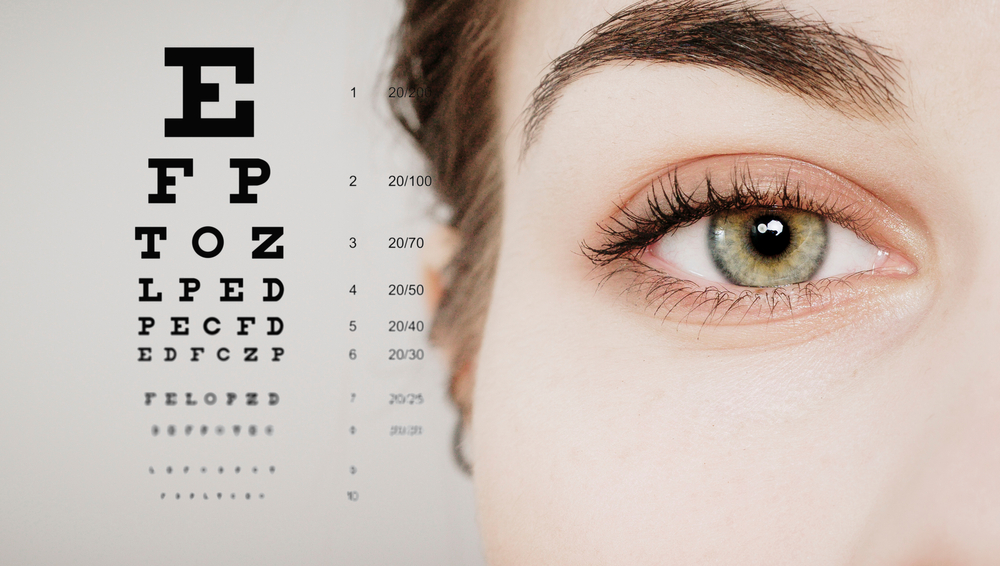Do Eye Defects Prevent Obtaining a Driving License?
“Do eye disorders prevent you from getting a driver's license?” It is a question whose answer is wondered by people who decide to get a driver's license and have any vision problems.
Eye disorders are a common health problem that can make it difficult for drivers to move safely in traffic. It is necessary to have a combination of visual, cognitive and physical skills required for driving. Eye health is an important criterion for obtaining a driver's license. Eye disorders that occur as a result of Eye disorders can negatively affect the individual's ability to drive.

SUBJECT TITLES
- Which Eye Disorders Cause Problems in Obtaining a Driving License?
- Is It Necessary to Have an Eye Examination Before Getting a Driving License?
- Can Color Blind People Get a Driving License?
- Can People Seeing in One Eye Get a Driving License?
- Is Ptosis (droopy eyelid) an obstacle to obtaining a driver's license?
- Does Diplopia (Double Vision) Prevent Getting a Driving License?
- What should be the eye number for a driver's license?
- Source
Which Eye Disorders Cause Problems in Obtaining a Driving License?
Eye disorders; They can be examined in three main groups: refractive errors of the eye, eye diseases and eye injuries. Some of these groups may cause problems in obtaining a driver's license. Some of the situations that cause problems in obtaining a driver's license are as follows:
- Refraction Errors: It is the condition in which the eye cannot focus the incoming rays clearly on the retina. Refractive errors such as myopia, hyperopia, astigmatism and presbyopia can reduce visual acuity and visual field. Refractive errors can be corrected with methods such as glasses, contact lenses or laser. However, there is a certain standard of visual acuity to obtain a driver's license. People who cannot meet this standard may not be able to obtain a driver's license or may have restrictions on their driver's license.
- Eye Diseases: These are various disorders that disrupt the structure or function of the eye. Some diseases such as glaucoma, cataract, macular degeneration, diabetic retinopathy, retinal detachment, keratoconus, eye infections and dry eye; It can impair visual acuity, visual field, visual functions such as color vision, contrast sensitivity and binocular vision. Eye diseases can be treated with methods such as glasses, contact lenses, medication, drops, laser or surgery.
People who cannot meet a certain vision standard to obtain a driver's license may not be able to obtain a driver's license. For example, in Turkey, both eyes must have a visual field of at least 50 degrees.
- Eye Injuries: It is a situation where the eye is physically damaged. Eye injuries may occur due to reasons such as accidents, blows, burns, cuts, foreign objects, chemicals, rays or infections. This condition can impair visual acuity, visual field, visual functions such as color vision, contrast sensitivity and binocular vision. Eye injuries can be treated with methods such as medication, drops, dressings, laser or surgery. However, there is a certain standard of visual acuity and visual field to obtain a driver's license. People who cannot meet this standard may not be able to obtain a driver's license or may have restrictions on their driver's license. For example, in Turkey, people who are blind in one eye can get a driver's license, but their driver's license contains the phrase "one eye" and they are required to wear glasses while driving.
Is It Necessary to Have an Eye Examination Before Getting a Driving License?
Driving a vehicle requires good vision and visual perception skills. People with visual impairment may find it more difficult or incorrect to recognize colored signs and lights, rear signal lights, reflectors and other visual cues they encounter in traffic than people with normal vision. This can impair visual functions necessary for driving, such as recognizing hazards, judging distance and speed, adapting to changing light conditions, and communicating with other drivers and pedestrians. In order to obtain a driver's license, it is necessary to have an eye examination according to the required health report. For a driver's license, vision levels are determined through an eye examination and a report is issued for people with sufficient vision to obtain a driver's license.
Can Color Blind People Get a Driving License?
People with color blindness may tend to make more driving errors, risk accidents, or avoid driving while driving.
The effects of color blindness on driving ability and safety depend on the type of color blindness, individual differences, and driving may vary depending on the environment. For example, people with red-green color blindness may have a harder time recognizing traffic lights, vehicle rear signal lights and reflectors. People with blue-yellow color blindness may have difficulty distinguishing traffic signs, road lines and other vehicles. People with color blindness need other clues (such as shape, position, brightness, contrast, movement) to recognize colors. You may have to trust a lot. However, these tips may not always be sufficient or accurate. People who want to get a driver's license must obtain a medical report issued by authorized health institutions. In the health report, the person's visual acuity, visual field, color vision, contrast sensitivity and binocular vision tests are performed. The Ishihara test is usually used for color vision testing and the person is expected to be able to distinguish red and green colors. People with color blindness can get a driver's license, but their driver's license will contain the phrase "color blind".
Can People Seeing in One Eye Get a Driving License?
People who are sighted in one eye (also known as monocular people) are people who are completely blind in one eye or have very low visual acuity. People who can see in one eye may experience some difficulties while driving. These may include impairments in visual functions such as depth perception, distance and speed estimation, visual field, contrast sensitivity, glare sensitivity, and night vision. 'Can one eye get a driver's license?' The answer to the question may vary from country to country. People who are sighted in one eye may be subject to different legal and medical requirements in different countries in terms of driving ability and safety.
The conditions for people who are sighted in one eye to obtain a driver's license may vary from country to country. Some countries prohibit issuing driver's licenses to people who are sighted in one eye, while other countries issue driver's licenses to people who are sighted in one eye, but may impose some restrictions or additional tests. Requirements for obtaining a driver's license may vary depending on the type of vehicle, level of visual impairment and legal regulations. People who want to get a driver's license must obtain a medical report issued by authorized health institutions. In the health report, the person's visual acuity, visual field, color vision, contrast sensitivity and binocular vision tests are performed.
In Turkey, individuals with only one eye may not be given a driver's license. However, individuals who can meet a certain visual acuity standard with their healthy eyes can obtain a driver's license with the decision of the medical board.
Is Ptosis (droopy eyelid) an obstacle to obtaining a driver's license?
Ptosis is a condition in which the upper eyelid is lower than normal and the eye does not open fully. Ptosis may be congenital or may develop later due to reasons such as aging, trauma, infection, neurological disease or eye surgery. This condition can restrict the visual field of the eye and negatively affect visual acuity, depth perception and driving safety.
Ptosis in Turkey. People with a medical condition can obtain a driver's license. However, depending on how much ptosis restricts the visual field, there may be some restrictions on their driving license. For example, in some cases, people with ptosis are only allowed to drive during the day or at certain hours.
Does Diplopia (Double Vision) Prevent Getting a Driving License?
Diplopia is the condition in which the same object is perceived as two separate images. Diplopia may occur as a result of incompatible movements of the eyes or damage to the optic nerves or muscles. This condition can impair visual acuity, visual field, depth perception and visual coordination necessary for driving. People with diplopia may have difficulty recognizing dangers while driving, judging distance and speed, adapting to changing light conditions, and communicating with other drivers and pedestrians. For this reason, diplopia is an obstacle to obtaining a driver's license in Turkey. However, if methods such as glasses, contact lenses, prisms or surgery that can correct diplopia are used, a medical report may be appropriate for a driver's license.

What should be the eye number for a driver's license?
People who want to get a driver's license must pass an eye examination and meet a certain standard of visual acuity. Eye Individuals who meet the driver's license conditions can obtain a driver's license with a report given by a doctor.
Visual acuity is the ability to see the eye clearly from a certain distance. It refers to the ability to see. Visual acuity can be corrected with the use of glasses or contact lenses. The eye number required to obtain a driver's license varies according to driver's license classes. Minimum visual acuity standards determined according to driving license classes are as follows:
- Visual acuity of one eye for A1, A2, A, B, BE, F, G, H and K driving licenses is 2/10. The total visual acuity of both eyes should not be less than 12/20. This means that one eye must have at least 20% visual acuity and both eyes must have at least 60% visual acuity. People who meet this standard by using glasses or contact lenses can get a driver's license. These people have the phrase "glasses" on their driver's license and it is considered mandatory to wear glasses or contact lenses while driving.
- C1, C1E, C, CE, D1 For D1E, D and DE class driver's licenses, the visual acuity of one eye must not be less than 6/10 and the total visual acuity of both eyes must not be less than 16/20. This means that one eye must have at least 60% visual acuity and both eyes must have at least 80% visual acuity. In this case, people who meet this standard by using glasses or contact lenses can obtain a driver's license.
The eye number to obtain a driver's license varies depending on the driver's license classes. In Turkey, eye number must be between -6.00 and +6.00 for group 1 drivers, and between -8.00 and +8.00 for group 2 drivers. People who meet this standard by using glasses or contact lenses can obtain a driver's license.
Source
https://bmjopen.bmj.com/content/10/11/e040881
https://road-safety.transport.ec .europa.eu/system/files/2021-07/new_standards_final_version_en.pdf
https://www.aao.org/eye-health/tips-prevention/vision-driving
http://orcid.org/0000-0002-5285-1507
http://orcid.org/0000-0003-4820-0397
http://orcid.org/0000-0002-5764-1306
http://orcid.org/0000-0001-8385-2003
https://creativecommons.org/licenses/by/4.0/
https:/ /www.nvi.gov.tr/konya/surucubelgesi
https ://www.rcpjournals.org/content/clinmedicine/22/2/104
https://www.frontiersin.org/articles/10.3389/fnhum.2022.927712/full
https://academic.oup.com/book/25259/chapter/189811082
https://europepmc.org/articles/PMC512485
https://onlinelibrary.wiley.com/doi/pdf/10.1111/cxo.12396
https://www.academia.edu/5664662/Colour_blindness_in_everyday_life_and_car_driving
Tarih: 04/01/2024